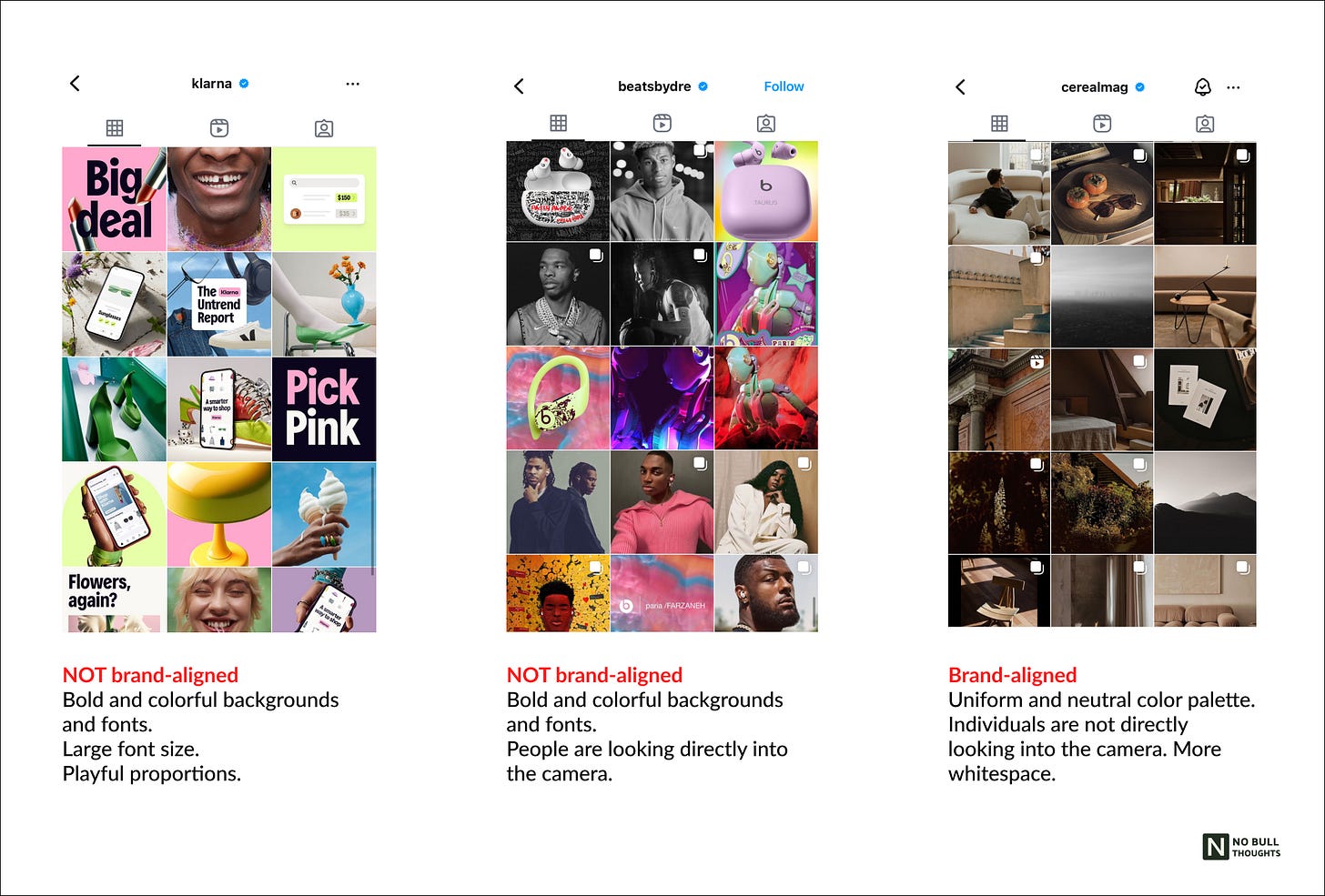NBT #6: Bullet-Proof Brand Brief
Plus, the stuff you won't find anywhere else.
If you Google "How to write a brand brief," you'll find plenty of templates and examples. However, I have found that there are a few secret components and practices that really help make your brand brief a useful reference document rather than a one-time output that sits on the G-drive shelf.
The best brand briefs allow anyone on your team – product managers, engineers, ops managers, recruiters – to produce collateral that is brand-aligned. As a marketing leader, the most important thing is to put yourself in the shoes of a non-marketer when you're writing the brand brief. It's important to provide tangible, straight-forward examples that will realistically arise for various non-marketing members of the team.
What Is a Brand?
The Typical Brand Brief Structure
i.e. the stuff you'll find on Google
I'm going to basically copy/paste the structure that you'll see everywhere else in case you're too lazy to Google it yourself.
Vision & Mission - People define this differently, but I always define it as:
Vision is what the world will look like when we are successful.
Mission is how we move towards that vision. It's what we do each day to get ourselves closer to that future-state.
Who We Are - If a reporter asked you to describe your team in 1-2 sentences, how would you respond?
What We Offer - If a reporter asked you to describe your service or product in 1-2 sentences, how would you respond?
Our Values - How do we promise to operate as a team? What promises will we uphold for our customers?
Who We Serve (i.e. Target Audience) - Don't say everybody, because a product that's designed for everybody is really designed for nobody.
Our Competition
Why We Will Win - Why do we think people will choose us over the competition? This includes product positioning and competitive advantage.
Brand Principles - High-level guidance on how the brand should always come across. A good way to think about this is, "If you asked people to use 3 adjectives to describe your brand, what 3 adjectives would you want them to choose?"
Brand Voice & Tone - We'll get into this below.
Secret Components of a Bullet-Proof Brand Brief
This is where I'm sharing the extra good stuff!
Secret Component #1: Social Media Posts We Hate & Social Media Posts We Love
It's not enough for your brand brief to state that your brand needs to feel "polished" or "playful" or "rebellious." You need to provide tangible, visual examples of what is or is not polished, what is or is not playful, what is or is not rebellious.
A great way to do this is by including Social Media Posts We Hate and Social Media Posts We Love.
The "Social Media Posts We Hate" may come from brands you love and admire but represent the opposite of what you're trying to achieve with your own brand. For example, let's say you have a brand that is for high net worth individuals (HNWIs) and your brand principles are "understated" or "quietly luxurious."
You might share a few posts from Klarna, a fintech company that targets a younger demographic and show what it means to be bold and loud rather than understated or quietly luxurious.
(Don't get me wrong - I think Klarna has really great, distinct branding that works for its target audience; it's just not understated.)
You should compare and contrast examples and explain why certain images are or are not brand-aligned.
Secret Component #2: Provide Specific Situational Tone Guidelines
What's the difference between voice & tone?
Think of your best friend. You can probably recognize their voice regardless of whether they are happy, excited, mad, or sad. Their voice remains consistent. What changes, depending on the situation, is their tone.
Voice is constant. Tone is situational.
Your standard brand brief should include high-level guidelines on voice. For example, let's look at Tiffany & Co.
The Tiffany tone of voice voice is witty, elegant and classic.
Tiffany & Co. often pairs beautiful, elegant imagery with playful puns.
Pair your high-level voice principles with specific situational tone guidelines.
Let's say you have a mobile payments product called Payme. The voice may be "friendly, warm, and witty."
However, these are various situations for which you should provide specific tone guidelines. For example:
Situation #1: A mobile screen that describes what KYC means
Tone guideline: Lean towards straightforward and informational while being friendly and warm.
"<header> Let's get to know each other!
<body> We need to verify your identity before you can start using Payme. This helps us protect you and our community. And don't worry, we won't share your information with anyone else."
Situation #2: An email to a user that has violated our user agreement
Tone guideline: Stern and matter-of-fact without being rude.
"<header> Uh-oh, you've crossed the line.
<body> Dear {first name} - We are writing to let you know that you have violated our user agreement by ______. At this time, we do not allow users to ____. Your payments have been frozen until you reply to this email and confirm that you will immediately cease ____ activity. If you believe that an error has been made, you can reach out to {email address}."
Secret Component #3: Choose a Celebrity
This is a surprisingly simple tool that can help get your team aligned quickly.
Choose a celebrity whose voice & tone are very distinct and best match your brand. Ask your team to envision whether they can picture this celebrity saying the copy that is being written, posting the images that are being shared, etc.
It's much easier to write copy, read it aloud, and ask yourself, "Can I picture Dwayne Johnson saying that?"
I hope the above secret brand brief components can help you and your team take your brand brief to the next level!





